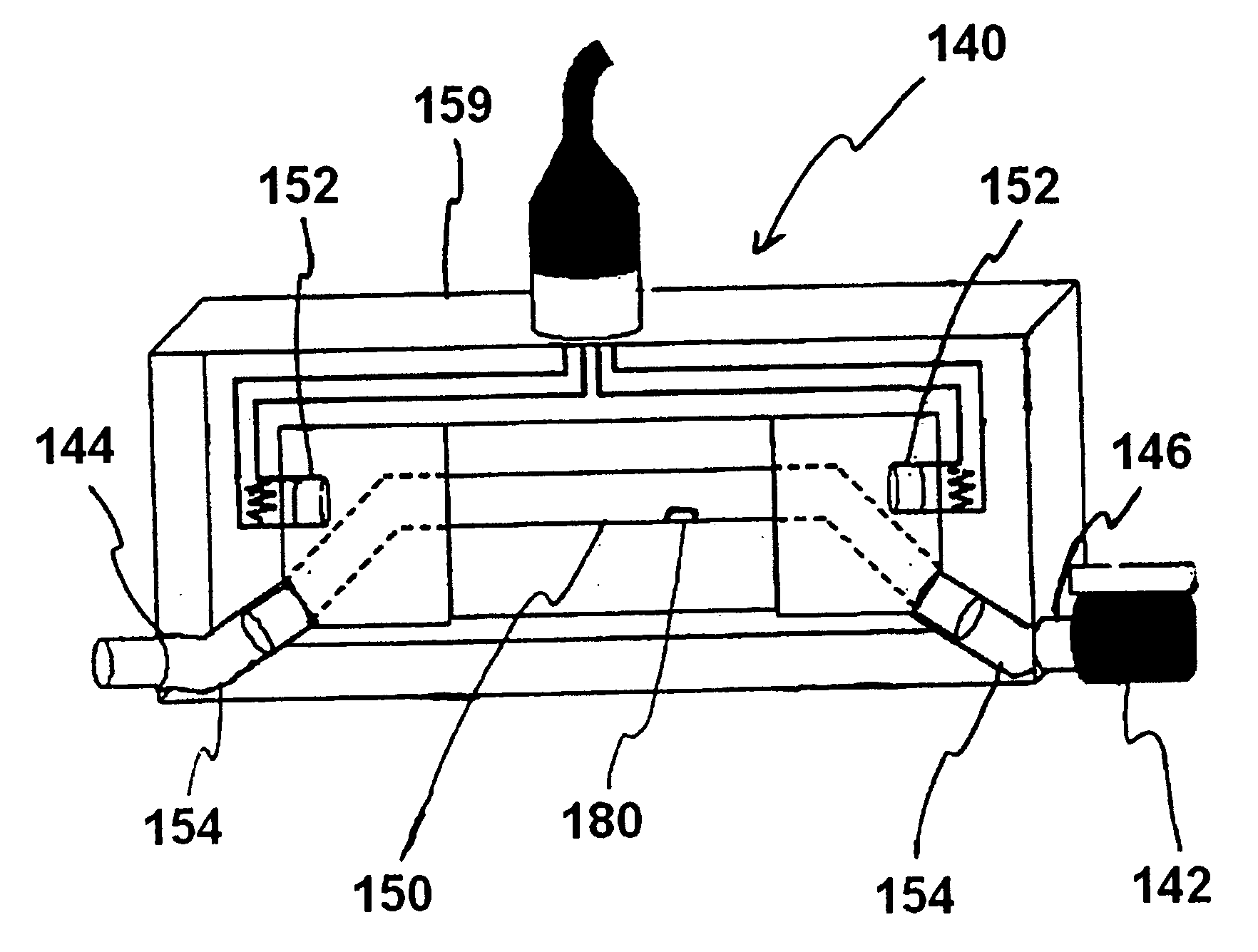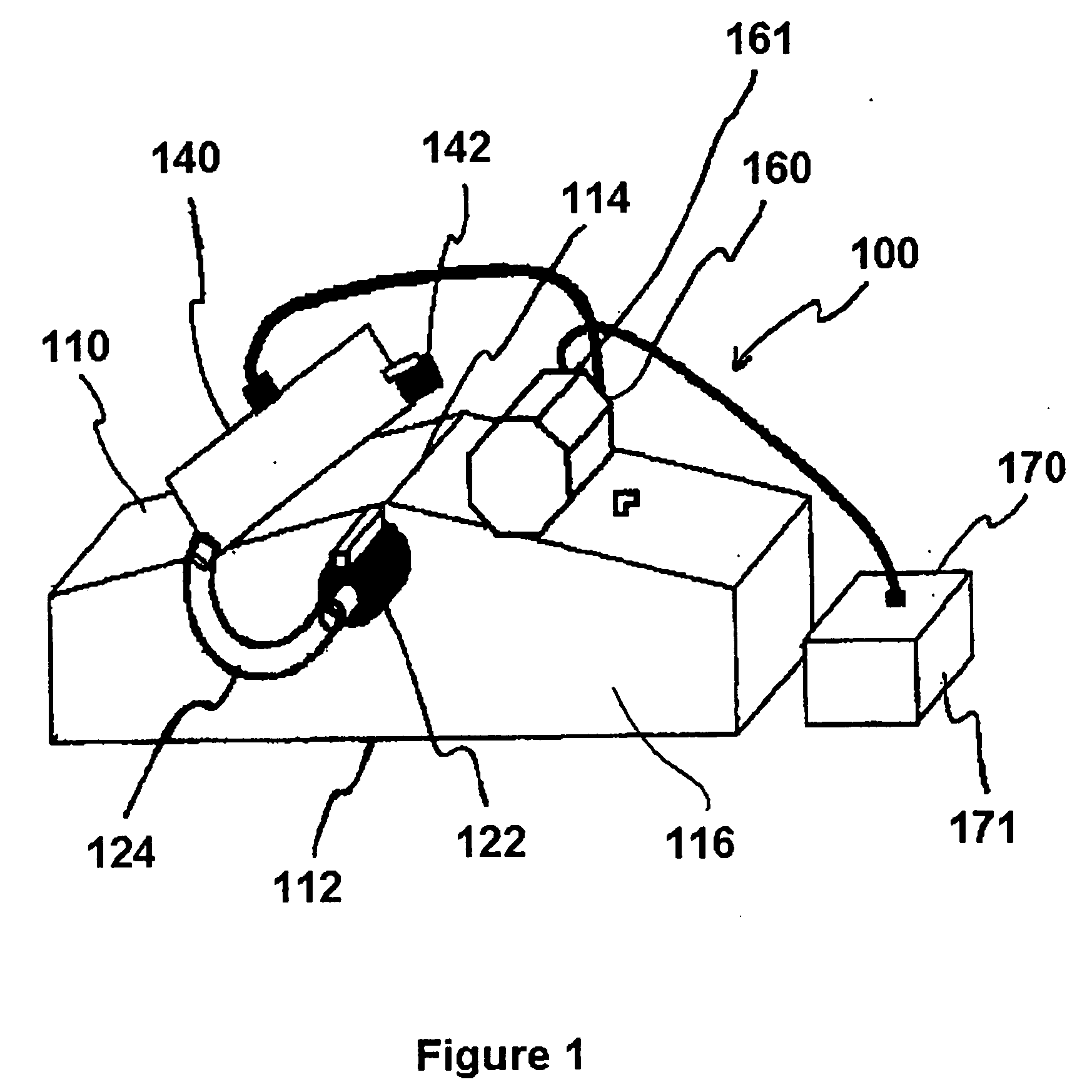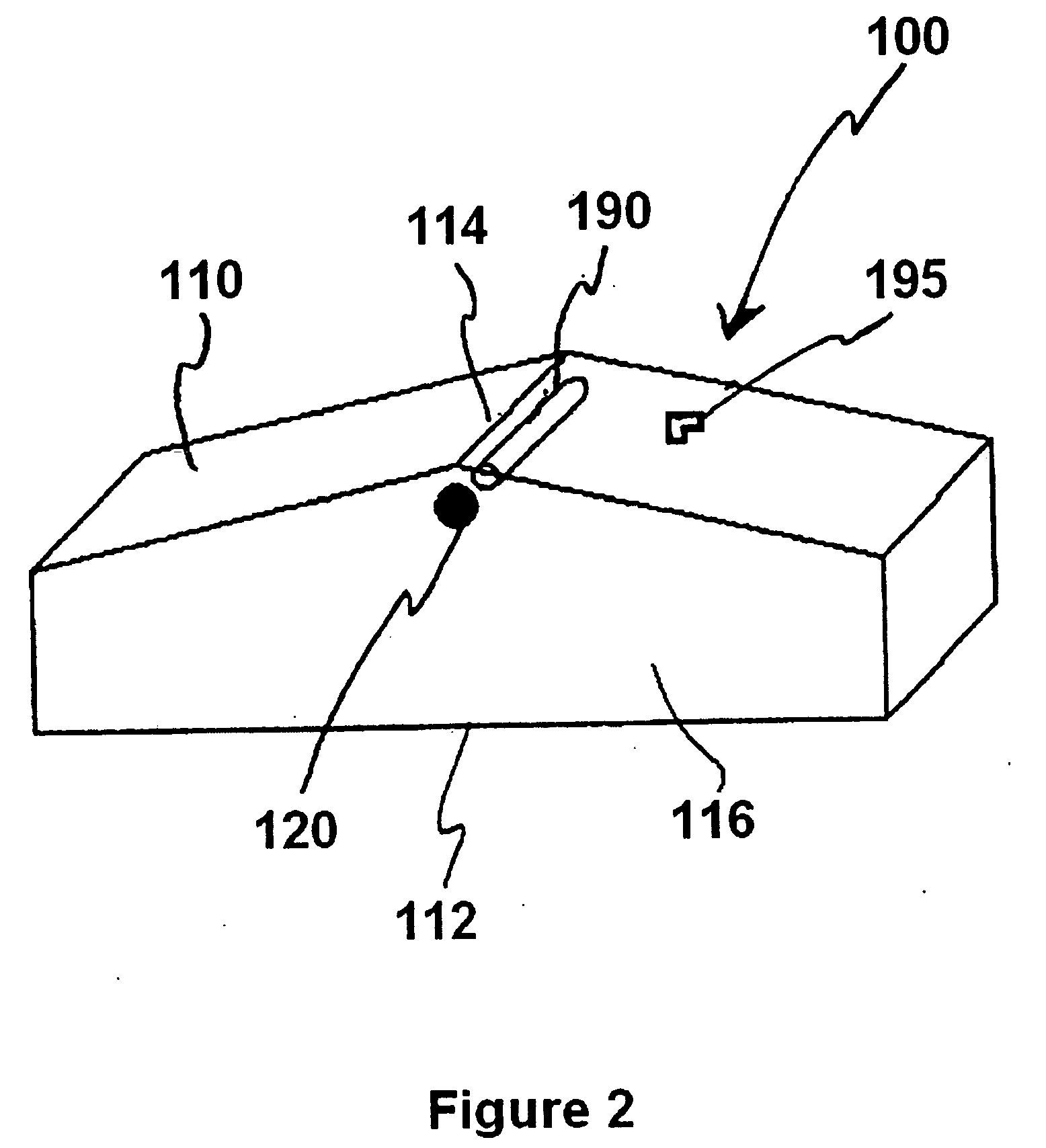Ultrasonic seepage meter
a seepage meter and ultrasonic technology, applied in the direction of instruments, liquid/fluent solid measurement, volume/mass flow by dynamic fluid flow effect, etc., can solve the problem of inherently difficult quantification of sgd, the effect of reducing labor intensity and improving accuracy
- Summary
- Abstract
- Description
- Claims
- Application Information
AI Technical Summary
Benefits of technology
Problems solved by technology
Method used
Image
Examples
Embodiment Construction
[0018]FIGS. 1 and 2 illustrate a preferred embodiment of an ultrasonic seepage meter 100 in accordance with the present invention. Generally, ultrasonic seepage meter 100 comprises collection funnel 110, flow meter 140, and controller logger 160. Collection funnel 110, as shown in FIGS. 1 and 2, further comprises an open bottom 112 and an enclosed top 114. The sides of collection funnel 110 form a square, each side being 0.46 m in length (corresponding to a capture area A=0.21 m2), and at least 10 cm tall. However, it can be appreciated that collection funnel 110 may be of many different types of geometries and still be within the spirit of the present invention. Extending from side 116 of funnel 110 is discharge outlet 120. Discharge outlet 120 may also further comprise valve 122, which may be a ball valve. In a preferred embodiment, the top 114 of funnel 110 is angled so that the side 116 with discharge outlet 120 is slightly higher than the other side of funnel 110 (see FIG. 4). ...
PUM
 Login to View More
Login to View More Abstract
Description
Claims
Application Information
 Login to View More
Login to View More - R&D
- Intellectual Property
- Life Sciences
- Materials
- Tech Scout
- Unparalleled Data Quality
- Higher Quality Content
- 60% Fewer Hallucinations
Browse by: Latest US Patents, China's latest patents, Technical Efficacy Thesaurus, Application Domain, Technology Topic, Popular Technical Reports.
© 2025 PatSnap. All rights reserved.Legal|Privacy policy|Modern Slavery Act Transparency Statement|Sitemap|About US| Contact US: help@patsnap.com



